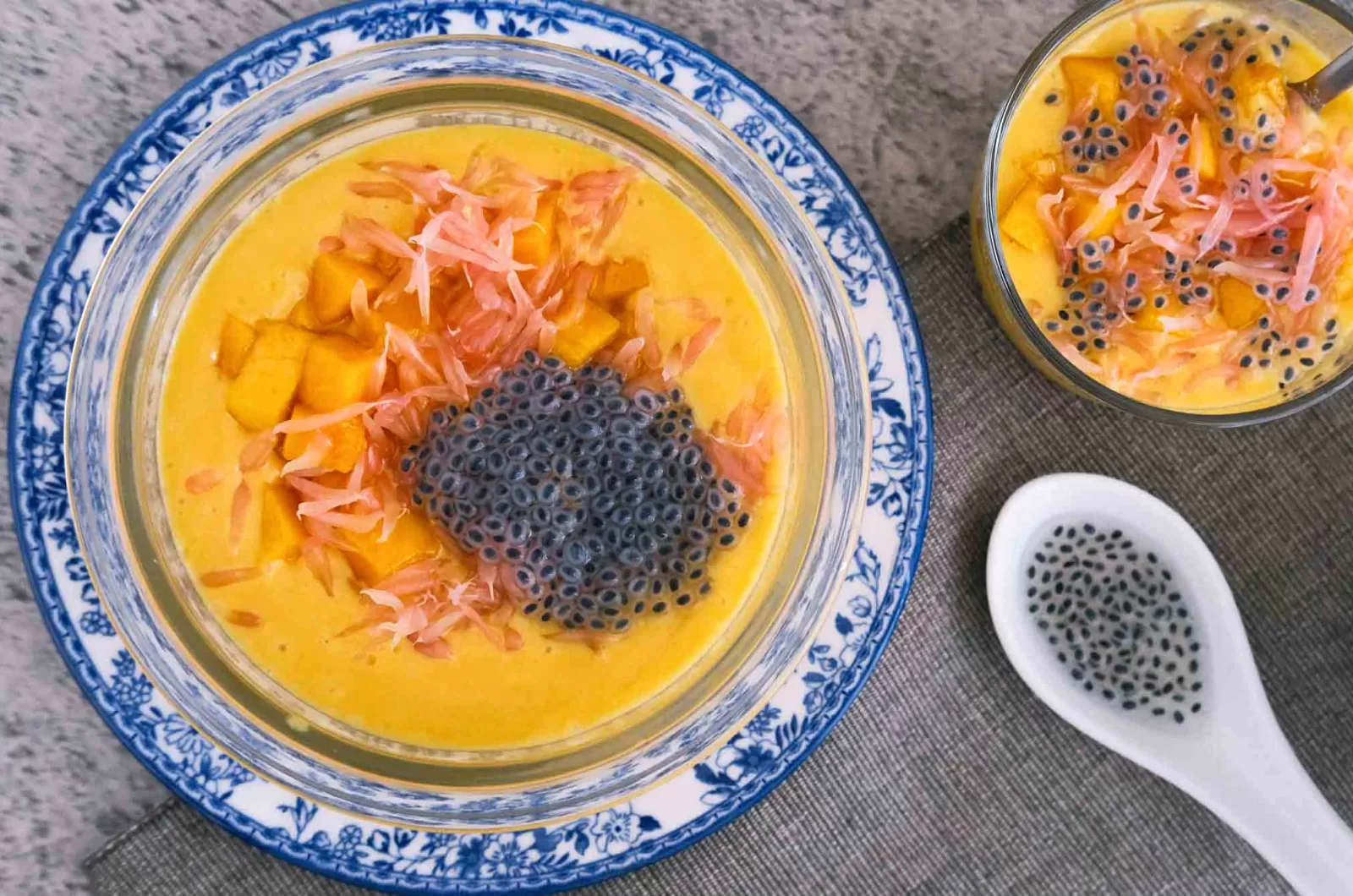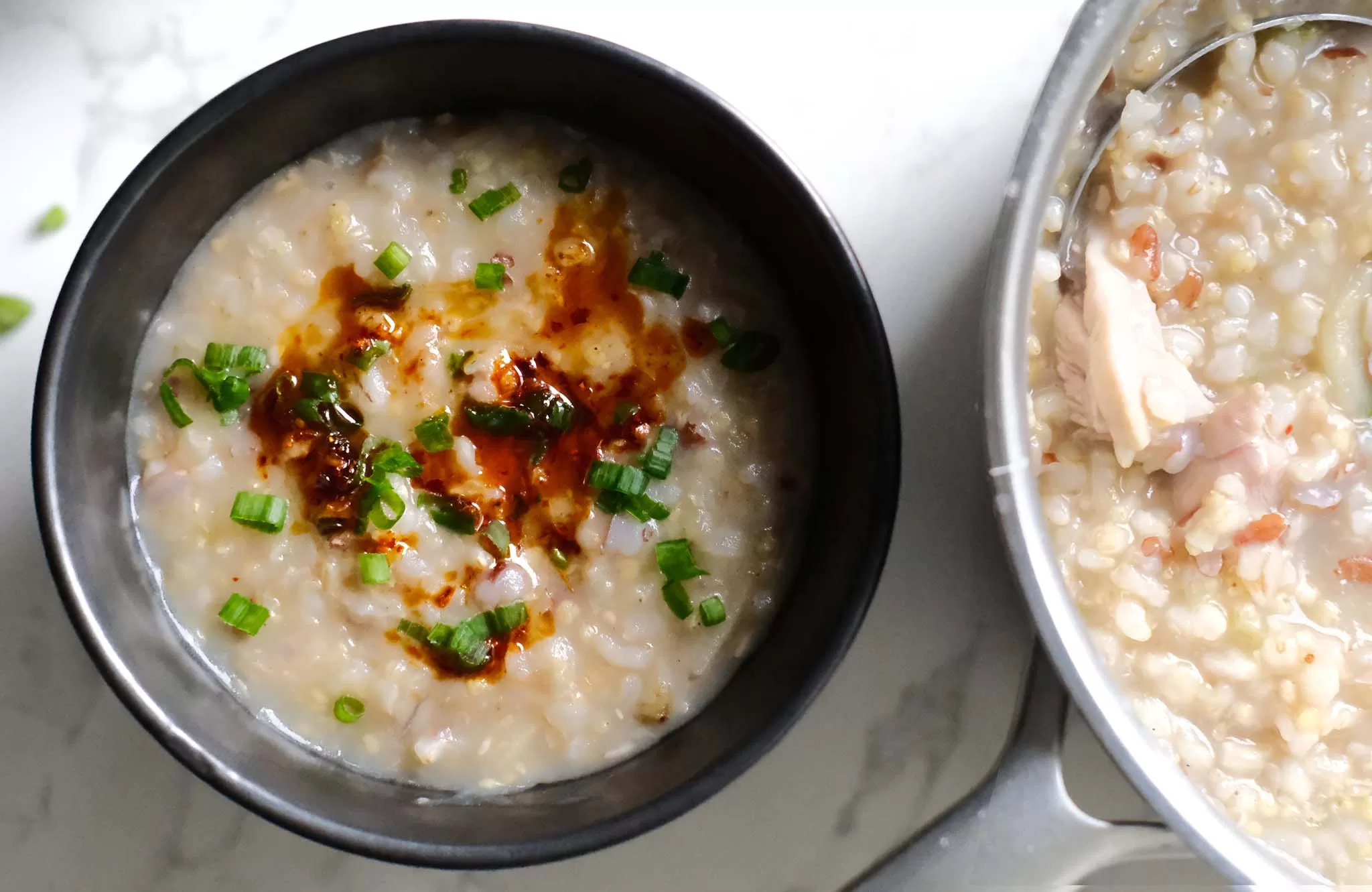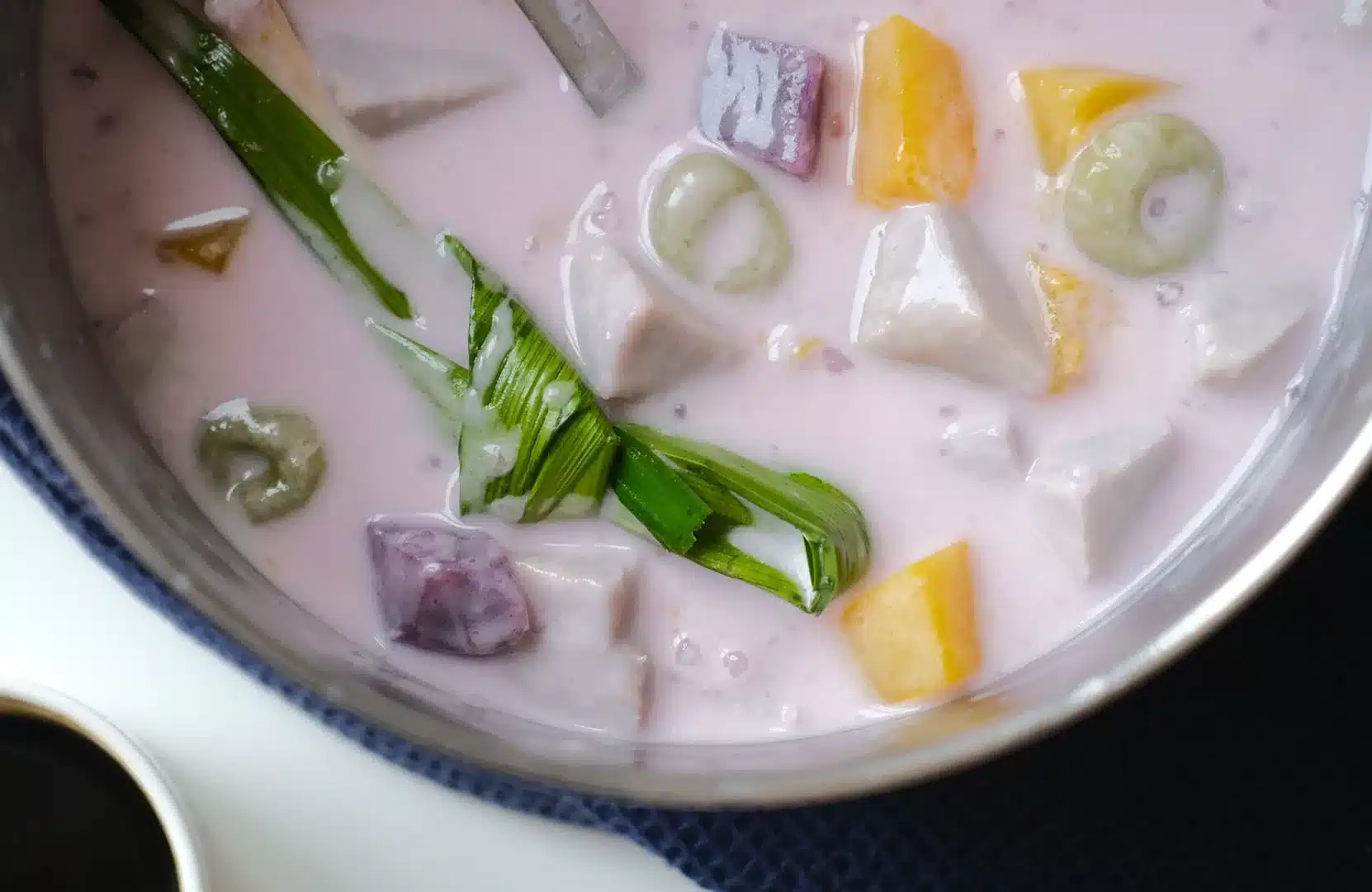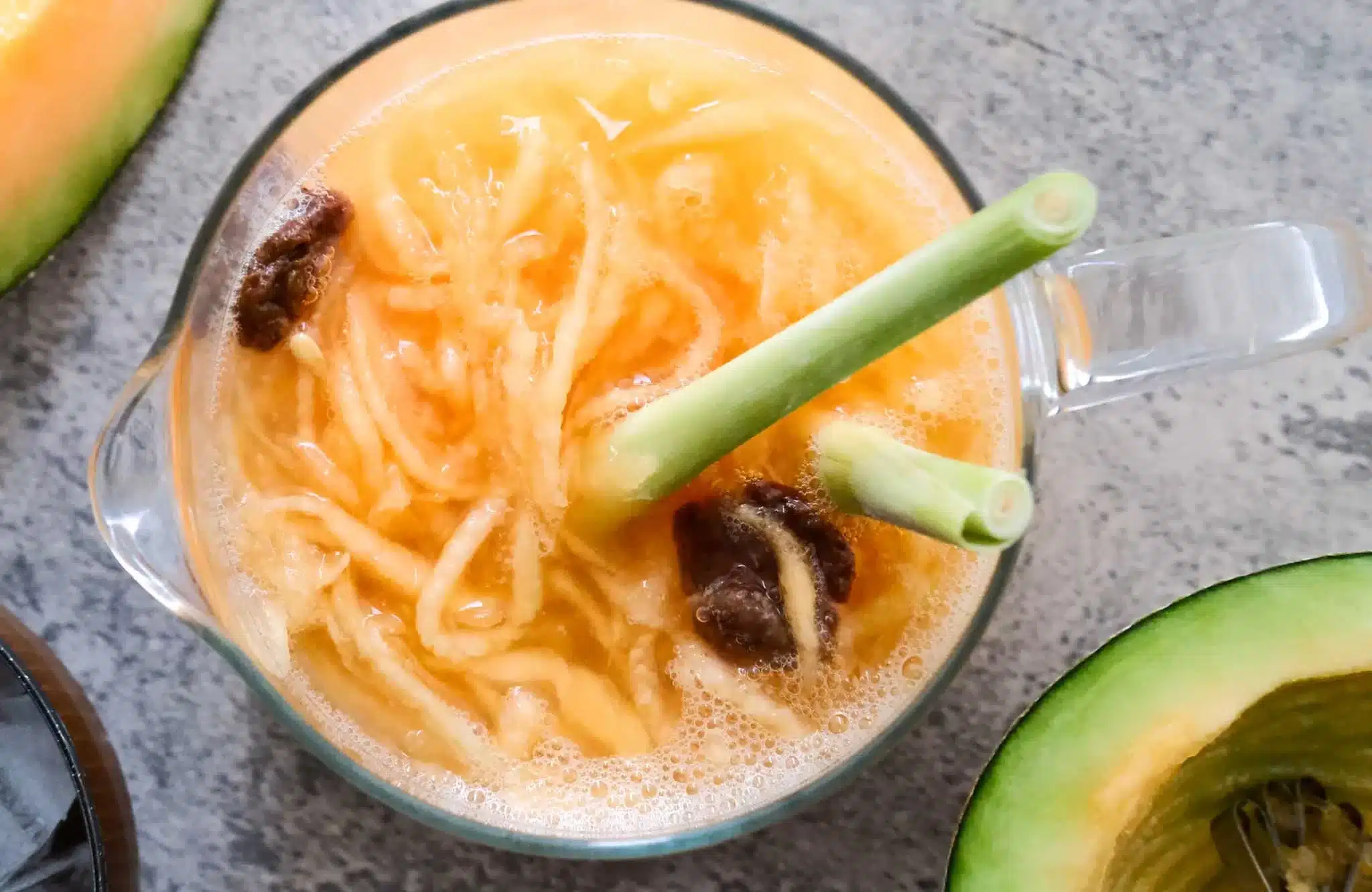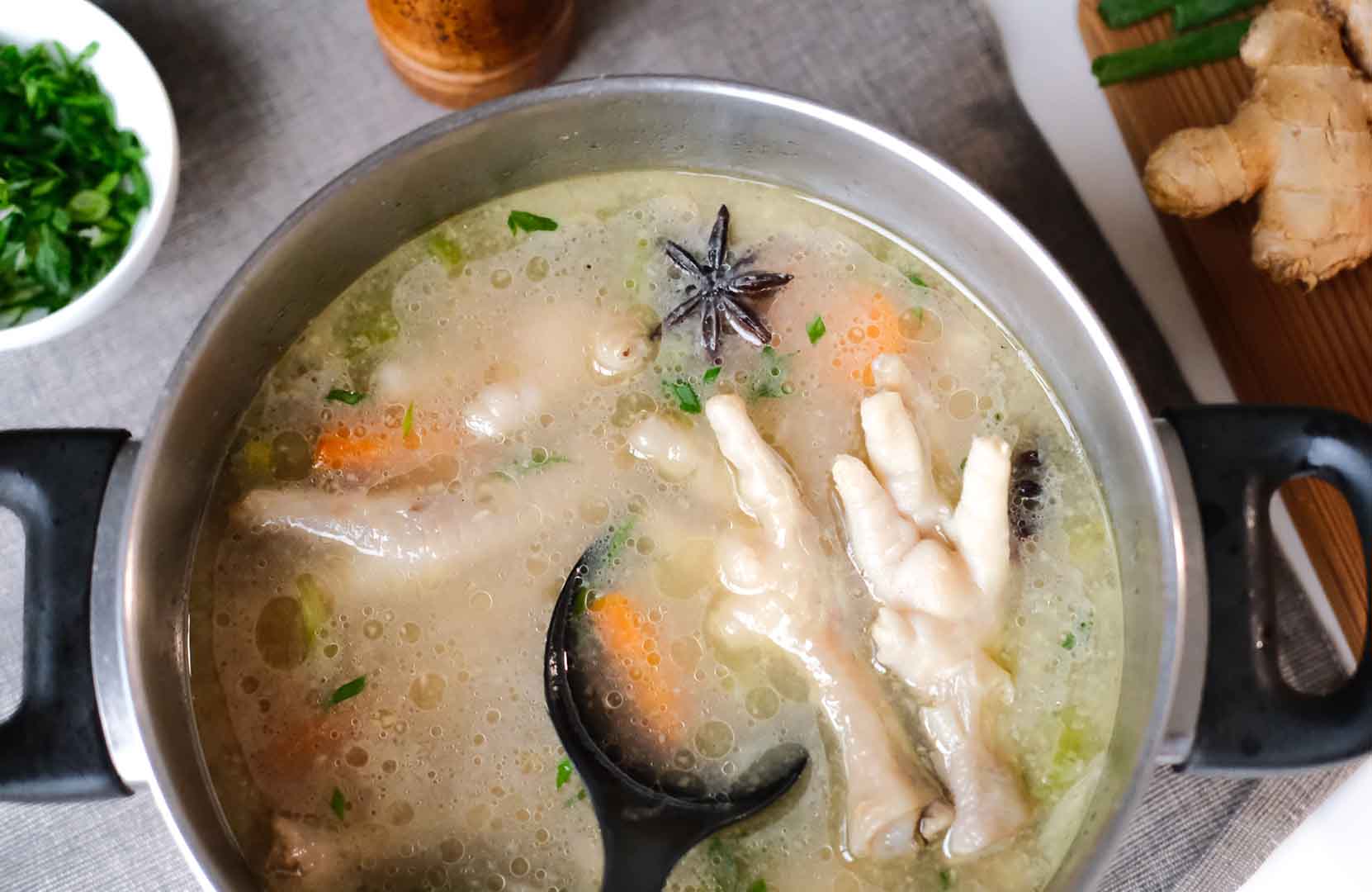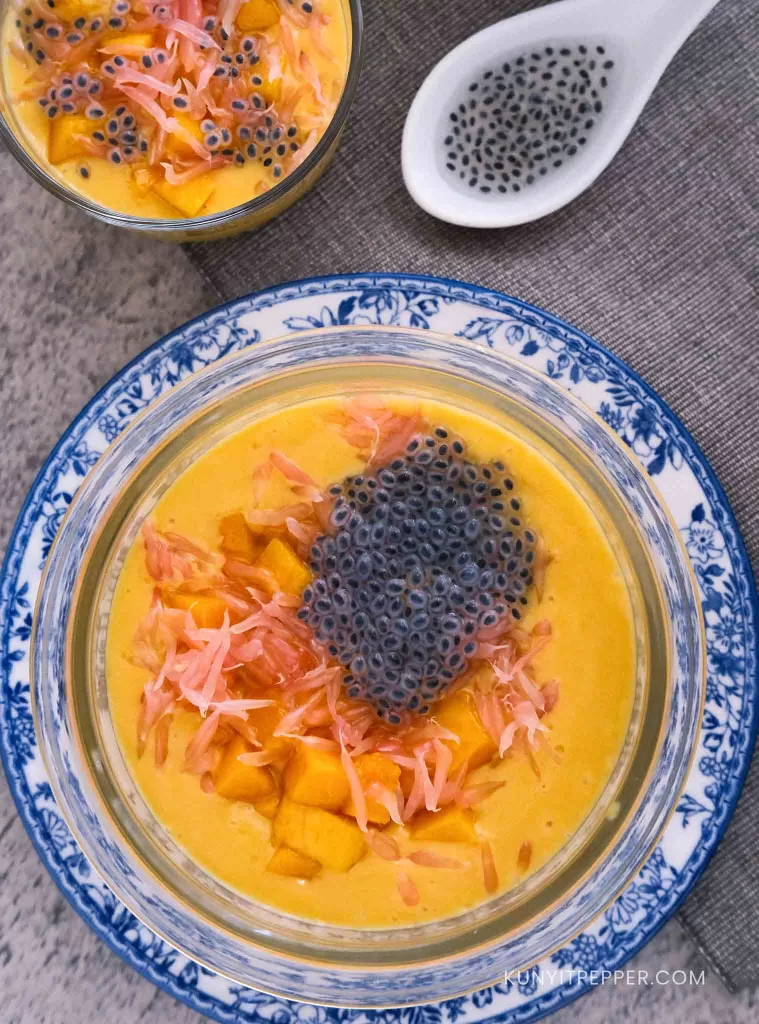
With the addition of basil seeds—an ancient seed used in both Ayurvedic and traditional Chinese medicine—this mango pomelo sago is not only hydrating but also packed with health benefits!
Table of Contents
- About this Mango Pomelo Sago
- Basil seeds in this mango pomelo sago
- Why I love this recipe
- Ingredients
- How to make Mango Pomelo Sago
- Calories in this Mango Pomelo Sago with Basil Seeds
- Other mango recipe you might like
I love Chinese Mango Pomelo Sago for its sweet and tangy, with playful textures of sago and pomelo pulp, brimming in a creamy icy base soup.
You will be surprised how easy it is to make this Chinese restaurant-level cold mango purée dessert.
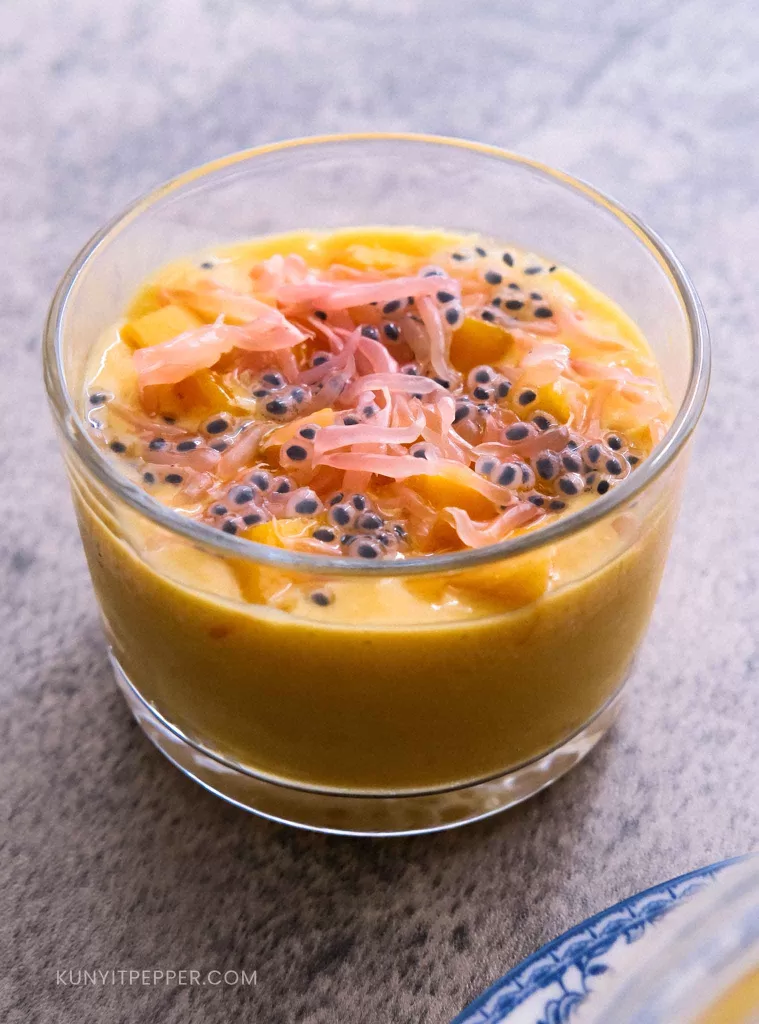
About this Mango Pomelo Sago
Mango Pomelo Sago is called Yang Zhi Gan Lu in Chinese, which literally means “Willow Branch Sweet Nectar.” It’s a poetic name (related to Buddhist symbolism) that perfectly describes the dessert—refreshing, lightly sweet, and ideal for hot tropical days.
Known as a Hong Kong dessert, this creamy mango pudding was first served in Singapore, created by a famous Hong Kong chef to suit the tropical climate of Southeast Asia.
It later spread to its neighboring country, Malaysia, and became popular in parts of Southern China. Now, it has evolved into many variations with different ingredients. Even turning into all sorts of fun forms like drinks, ice cream, and mooncakes.
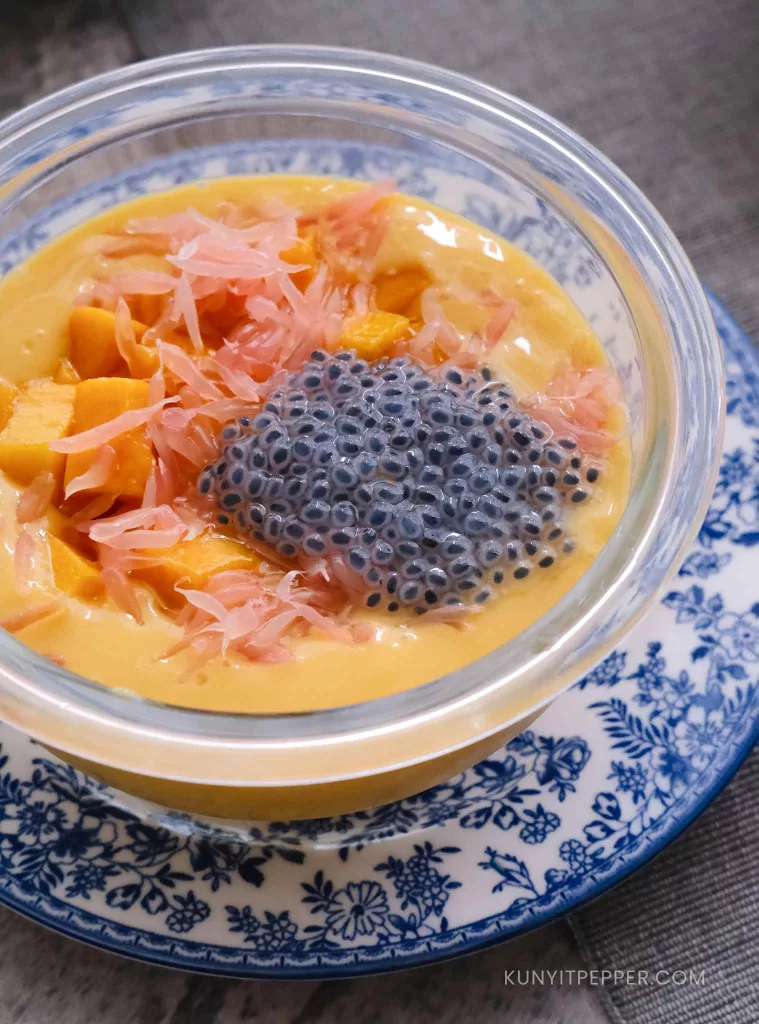
In most restaurants, the creaminess of this mango pudding usually comes from a mix of coconut milk, evaporated milk, and sweetened with sugar or condensed milk.
Since I couldn’t tolerate dairy milk anymore and avoid highly processed ingredients, my homemade mango pomelo sago recipe is made dairy-free—using natural soy milk combined with coconut milk.
It is still creamy but lighter in the stomach. Feel free to swap with your choice of milk or other plant-based using the same amount.
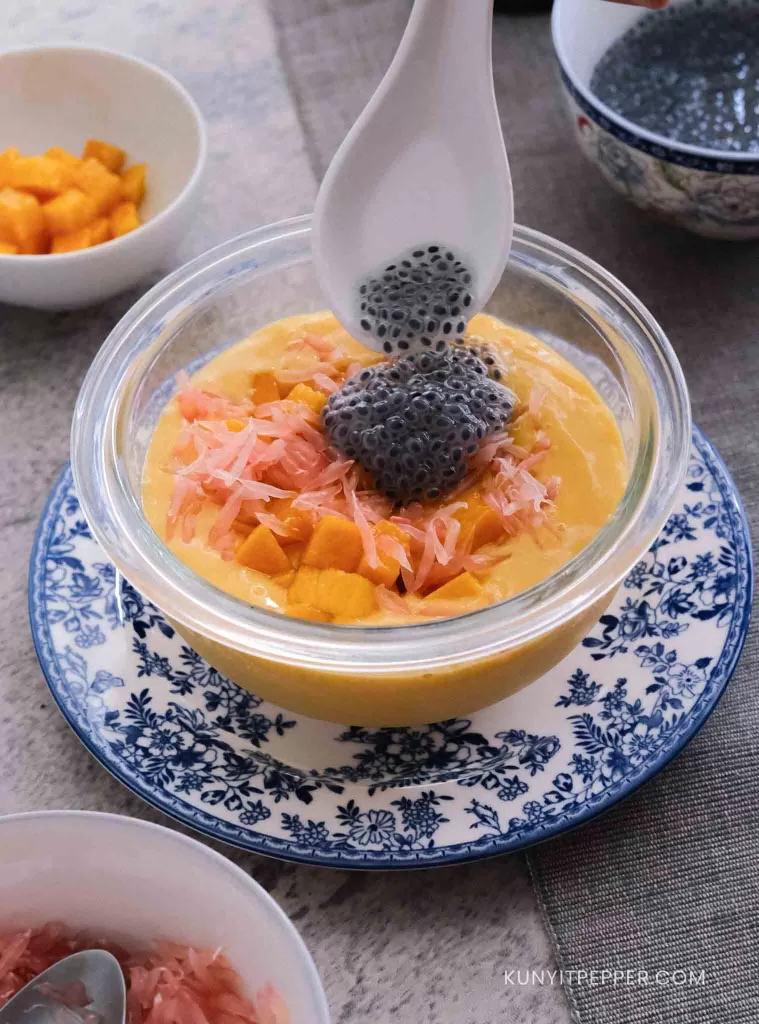
Basil seeds in this mango pomelo sago
Basil seeds are classic hydrating seeds from the Thai basil plant used in drinks and desserts across Asia. Growing up in a hot tropical climate, my family always preached about the hydrating benefits of these black seeds and how cooling and soothing they are.
Also goes by sabja, tukmaria and falooda, basil seeds are rich in omega-3, fiber, minerals, and antioxidants linked to many health benefits. Read what science says about the health benefits of basil seeds in Healthline.
Like sago, basil seeds are tasteless on their own. But, unlike sago, which is mainly for texture and filling, basil seeds are used for their hydrating benefits and health-boosting properties.
Why I love this recipe
- It’s easy to make and can be enjoyed immediately without chilling for hours.
- This recipe is playful with texture from the pomelo and basil seeds, with minimal sago.
- It’s dairy-free, gluten-free, and lightly creamy with natural ingredients. Soybeans have fewer carbs and more protein. Plus, they are lower in calories!
- As long as you use a sweet mango, you won’t need additional sugar when making the mango purée.
- It’s a hydrating, refreshing, and filling dessert — perfect for quenching your thirst on a hot, sunny day!
- The leftovers can be made into ice pops, so no waste! It can be a meal-prep dessert to cater for a week!
- A perfect hydrating and well-balanced dessert for a hot summer day. Naturally sweet, zesty, and creamy, this mango pudding dessert is both delicious and healthy.
Ingredients
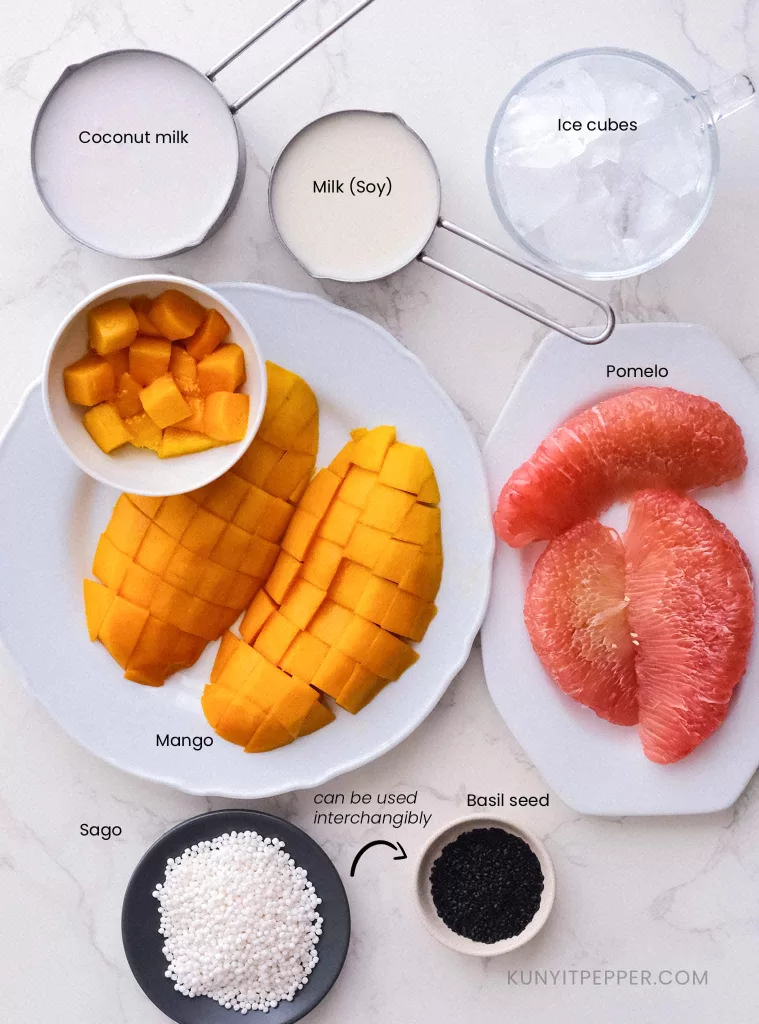
- Mango – Use fresh mangoes that are soft, perfectly ripe and sweet kind. My favorite kind is the peachy color mango, they are typically very sweet with a strong mango flavor. Feel free to use the ones that are available to you. Frozen mango works too!
- Pomelo – I suggest going for a red-fleshed pomelo. They are not only sweeter than the white-fleshed pomelo but contain 5-6 times richer in antioxidants (lycopene than β-carotene) – which your body and skin will thank you! Plus, they make an elegant garnish!
- Coconut milk/cream – I like to use fresh coconut milk I bought from a wet market due to the freshness and all-natural. Feel free to use coconut cream. I include the portion for both coconut milk and cream!
- Milk – The restaurant version uses evaporated milk. I like to use soy milk (non-sugary), which adds protein to the dessert, and it’s lighter than dairy. Feel free to try it with your choice of milk!
- Sago (small) – Sago is a filler that also adds texture to this dessert. In this recipe, 2 tbsp of cooked sago is used per 1 serving. I sometimes swap sago with basil seeds!
- Basil seeds – Basil seeds are my family’s choice to add hydration properties and health benefits to this mango pomelo sago. They can also make a great substitute option for sago because of the texture. You can find them in Chinese medicine shops, Asian markets, or wellness markets.
- Ice cubes – Ice cubes will be blended when making the mango purée. I’d go with smaller ice cubes to ease the blending.
🥄 Sugar is optional – I don’t use sugar in this recipe because I’d go for sweet mango. However, feel free to add 1 tbsp of sugar if needed. Consider combining the sugar in soy milk or coconut milk and dissolve it in a microwave or saucepan before adding it to the blender to make a puree.
How to make Mango Pomelo Sago
❶ Cut the mango into cubes. Set aside some of the mango for garnish!
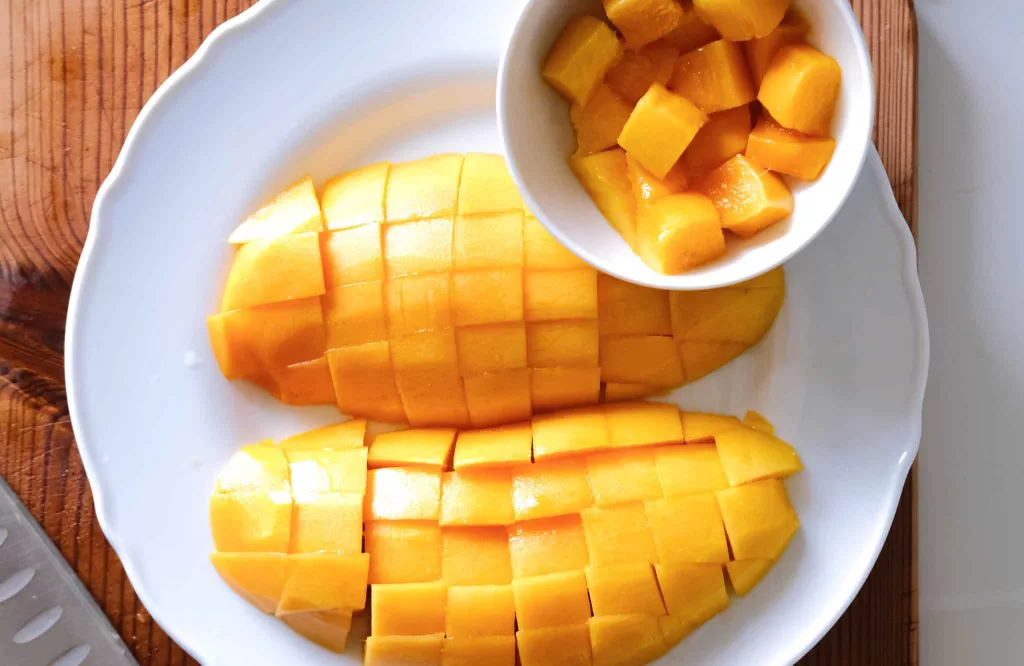
❷ Make the creamy mango puree- Blend mango with both of the milk until smooth. Add ice cubes and blend just for a few seconds until the ice are nicely crushed. P/s I like it to have some crushed ice chunks, plus it stays cold for longer.
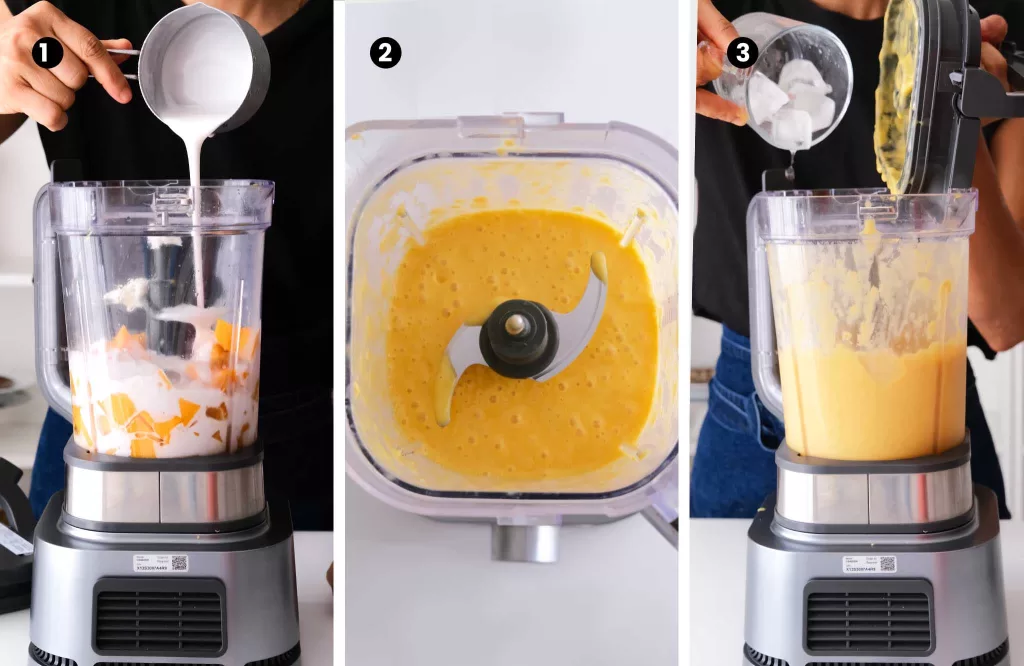
Pour it into the bowl and leave it in the fridge or freezer while preparing other ingredients.
❸ Soak the basil seeds for 15 minutes with normal-temperature water. Before that, consider rinsing them in a strainer. Basil seeds can hold dust that you might not see.
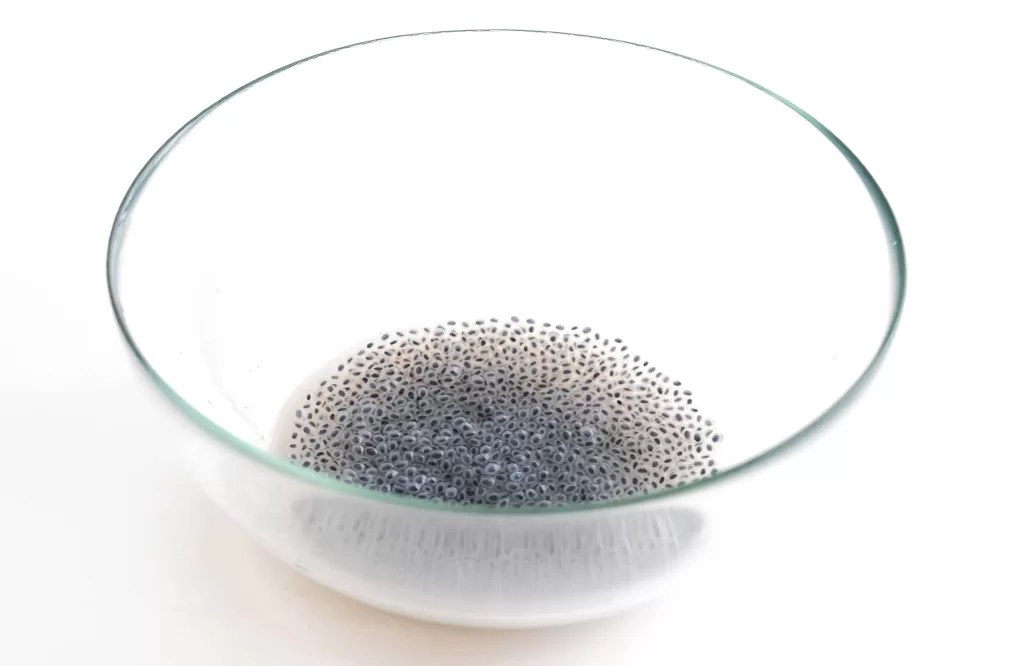
❹ Cook the sago– In a medium-sized pot, bring water and sago to a rolling boil until they’re no longer white. It usually took me about 15 minutes. Once they are transparent, strain them with a fine mesh strainer and rinse with tap water to wash the excess starch.

I’d move on to the next step while the sago is boiling. Note that sago and basil seeds can be used with or interchangeably.
❺ Extract the pomelo– If you buy a whole pomelo, start by scoring the top part into a few parts, then peel the skin with your hands. With your fingers, maybe with the help of a knife, separate the segments and remove the rind (the bitter white layer) to reveal the meat. Tear them into pieces of pulps.
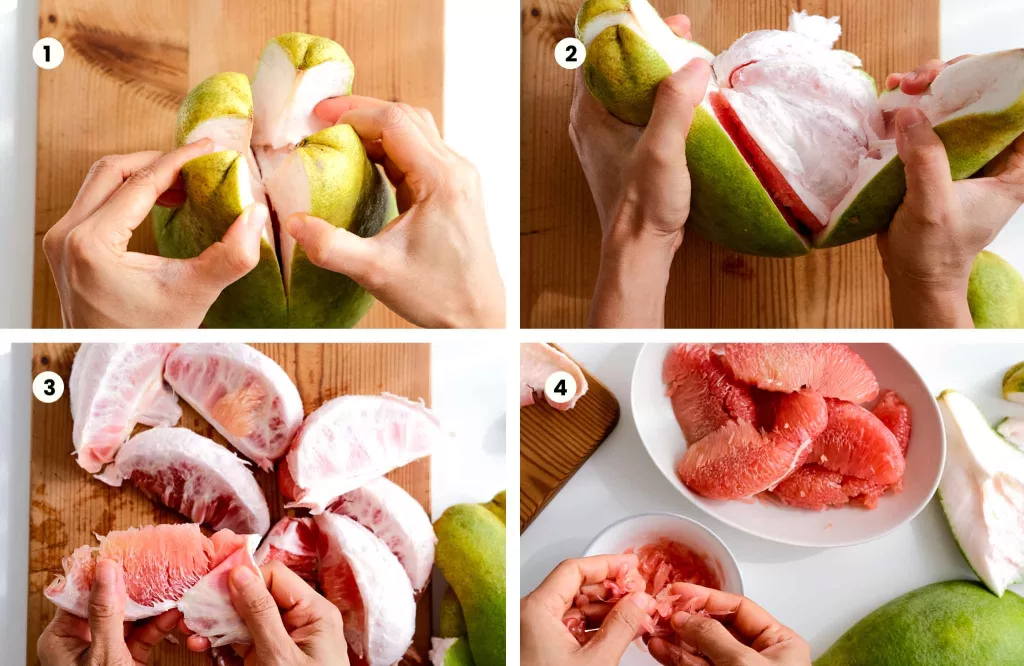
❻ Assemble– Bring out the mango purée, add a scoop of sago, toss the remaining mango cubes, and garnish with pomelo. Voila!
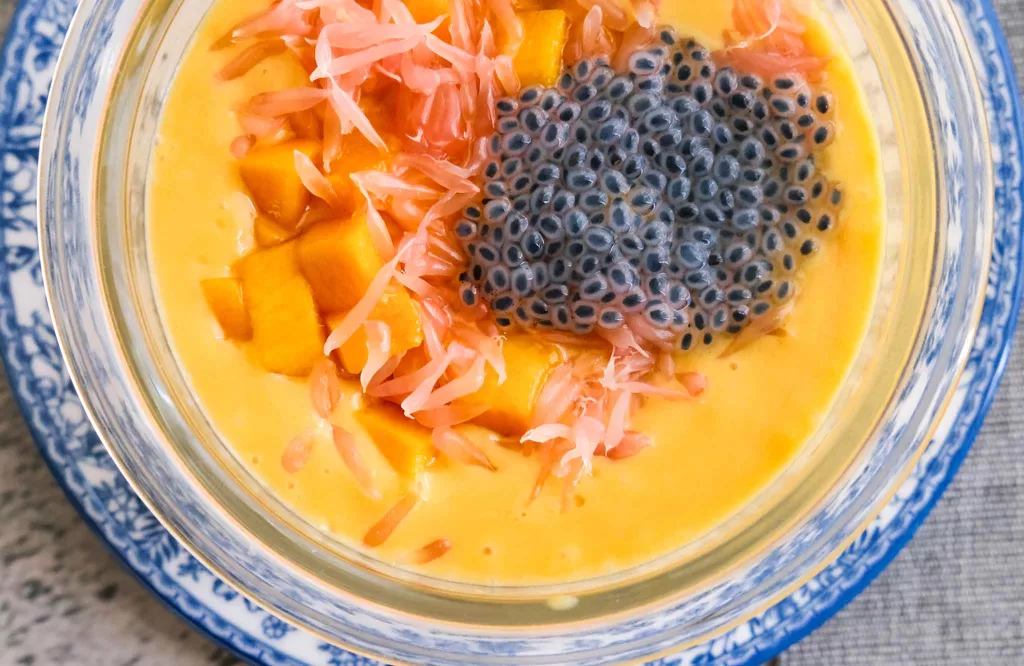
Calories in this Mango Pomelo Sago with Basil Seeds
There are approximately 612 kcal of total calories in this naturally sweetened and dairy-free mango pomelo sago with basil seeds. Since it yields two dessert bowls (2 pax), calories per serving is 306kcal.
FAQ
What mango is best to use when making mango Pomelo Sago?
I use ripe Thai lily mango, also known as golden lily mango. It is a common mango used in Singapore, Malaysia, and Thailand. I’d also go for a peachy color mango. Whichever mango you use, find a sweet type that is perfectly ripe that is available in your area. The mango has to be soft so it’s easy to purée. Frozen mango works too, it makes your dessert extra cold!
What are the calories in Mango pomelo sago?
A standard dessert bowl of mango pomelo sago from restaurants can contain about 600 kcal. The high-calorie count comes from the use of evaporated milk and added sweeteners like condensed milk or sugar.
Does mango pomelo sago have milk?
Yes, mango pomelo sago in the restaurant usually combines coconut milk with evaporated milk. Some variation add condensed milk for sweetening and thickening. But there are also variations with plant-based milk. In my recipe, I use soy milk combined with coconut milk.
Can I freeze mango pomelo sago?
Absolutely! You can pour it into an ice cream mold to make a mango pomelo sago popsicle.
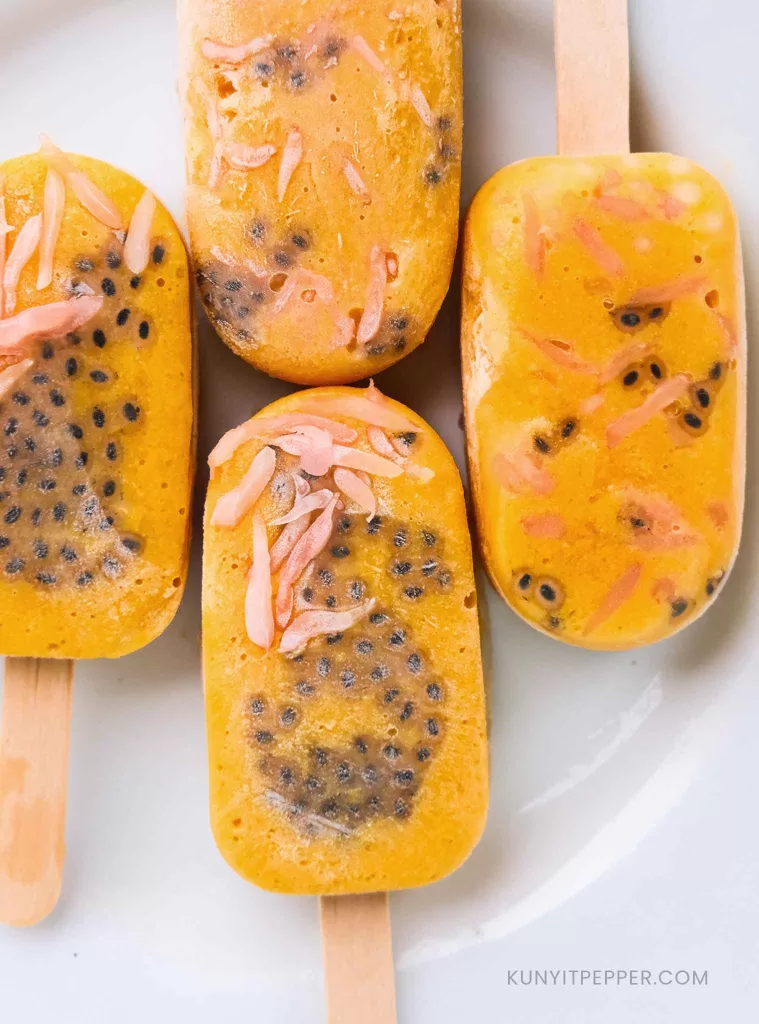
Other mango recipe you might like
Chinese Mango Pomelo Sago with Basil Seeds
2
servings15
minutes612
kcal306 kcal
20
minutesNaturally sweet and refreshing, this mango pomelo sago with basil seeds makes a well-balanced bowl of dessert for a hot, sunny day!
Ingredients
1 sweet and ripe mango/(300g). Leave some aside for garnish.
2 segments Pomelo. (Jump above to see how to extract pomelo pulp)
1 cup Cold coconut milk (1/2 cup if using coconut cream)
1 cup Cold soy milk (I use no sugar)
1 cup Ice cube (Skip if you’re using frozen mango)
3 tbsp Small sago
1 tbsp Basil Seeds
Directions
- Skin and cut the mango in small cubes. Leave some aside for garnish.
- Make the cold mango puree. Blend together coconut milk, soy milk, and mango in a blender until smooth, then add ice cubes and blend for a few seconds until crushed (I like to have some chunk of ice in it, plus it makes it stay cold longer. Keep the blended puree in a fridge to chill more while moving on to the next step. See visual guide above.
- Combine the basil seeds and normal-temperature water and leave the seeds to soak for 15 minutes.
- At the same time, boil the sago for 15 minutes or until they’re no longer white. Once they are transparent, strain them using a fine mesh strainer and rinse over tap water to wash the excess starch. See the 4-step image above. While boiling, you can also move on to the next step.
- Extract the pomelo pulp – If you buy pomelo segments, use your finger to separate the pulp gently. If you are extracting from the whole fruits, jump above to see how to extract pomelo pulp from scratch.
- Assemble– Bring out the mango puree from the fridge, scoop sago into a bowl, pour the mango puree, toss the remaining mango cubes, garnish with pomelo and blooming basil seeds. It’s ready to be enjoyed!
Equipment used
- Ninja Foodi BlenderCheck on Amazon
- Stainless Steel SaucepanCheck on Amazon
Notes
- Sugar is optional: Feel free to add 1-2 tbsp of sugar if needed. Consider dissolving the sugar in soy milk or coconut milk in a microwave or saucepan before adding it to the blender to make a puree.


